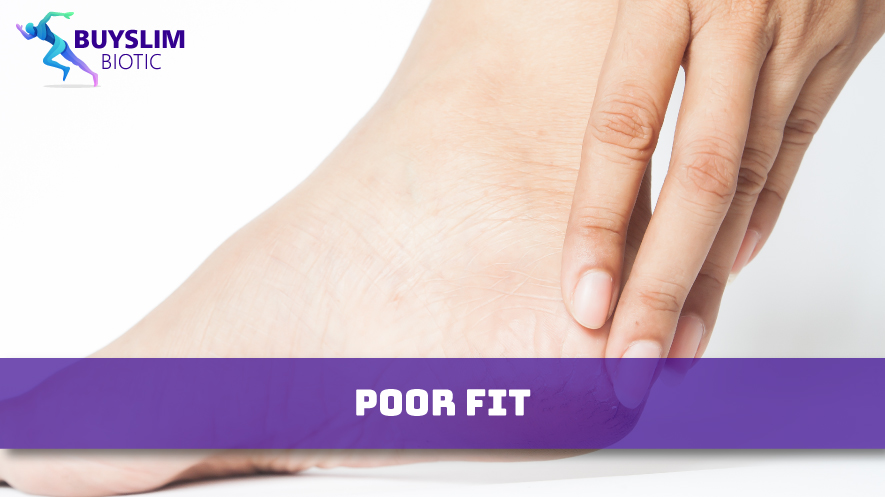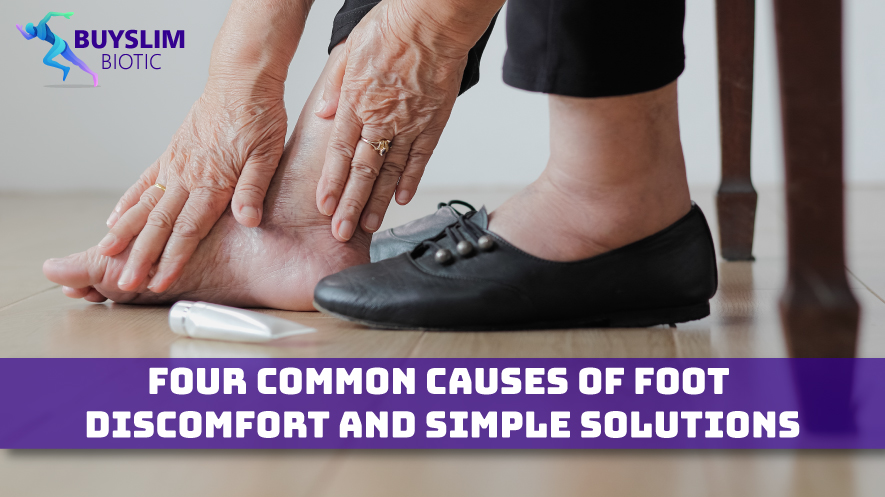We take our feet for granted — until they start hurting. A healthcare provider can help find the cause of your foot pain and suggest treatment.
Try soaking your feet and using over-the-counter pain relievers. You may also want to do heel and foot muscle stretches and use an ice pack.
1. Overuse
Foot problems often stem from overuse. If you jump back into sports and exercise after a long period of pandemic restraint or start working out more frequently and intensely than usual, your feet may not be able to handle the extra workload. That’s why it’s important to gradually ramp up activity levels and to always wear supportive shoes, even when you’re at home.
Another common cause of foot pain is wearing shoes that are too narrow, tight, or ill-fitting. This places too much pressure on the bones, tendons, and other structures in your feet, which can lead to overuse injuries like bunions, hammertoes, blisters, and pain under the big toe. It can also lead to a variety of soft tissue injuries, including corns and calluses.
Narrow-toed and high-heeled shoes squeeze the front of your feet together, causing them to bend unnaturally. This can irritate the small bones and tissue at the base of your big toe joint, causing it to become enlarged and develop a painful lump called a bunion. The pressure of these shoes can also push your toes together and force them into an unnatural position, which can cause other structural changes in your foot like hammertoes and blisters.
Wear and tear can also cause foot problems. If you notice an uneven pattern of shoe wear, especially in the area around your heel or the ball of your foot, this can indicate a condition like fallen arches, which weakens the ligament-like structure that runs the length of the arch of your foot. This can lead to painful bone spurs, shin splints, and other ailments.
Over time, your feet change shape and size as your body weight and gravity reshape the tissues and joints in them. Adding or losing weight can alter your shoe size, and certain conditions like rheumatoid arthritis can lead to swelling of the joints in the feet. It’s important to have your feet measured and to replace your shoes when they get too old or lose their support, as this can help prevent foot problems. Pain in only one foot or just the heel, arch, or toes can be a telltale sign of certain conditions and should never be ignored.
2. Poor Fit
Footwear has a huge impact on how your feet feel. If you wear shoes that are too tight, they can squeeze your toes and cause instability, which may lead to painful injuries. Shoes that are too loose can also be a problem, as they may not conform well to the shape of your foot. This can create or exacerbate problems like bunions and hammertoes, as well as cause your toes to rub against the inside of your shoe and form areas of thickened skin known as corns and calluses.
Wearing poorly fitting shoes can also affect your posture, causing you to stand or walk in an unnatural way that can place undue stress on your back, hips, and knees. In some cases, this can lead to shin splints, as the muscles in your legs and feet are forced to work overtime to compensate for your footwear.
Poorly fitted shoes can cause or exacerbate foot conditions including blisters, ingrown toenails, corns and calluses, bunions, heel spurs, flat feet, plantar fasciitis, metatarsalgia, and Morton’s neuroma. Incorrect footwear can also contribute to a variety of health problems, such as arthritis, gout, and spinal abnormalities.
The shoes you wear daily should be appropriate for your activity level, whether you are clocking 10,000 steps on a treadmill or walking around the city on vacation. High heels are generally out, as they shift your weight forward onto the balls of your feet and can cause pain, along with issues like hammertoes and bunions over time. Flip-flops are not a great choice, either, as they typically don’t offer arch support or cushioning to reduce the shock impact on your feet.
When you are shopping for new shoes, look for shoes that have a wide toe box and fit snugly but not tightly. It’s a good idea to shop for shoes in the afternoon when your feet are a little swollen and more likely to accommodate a new pair of shoes better. Also, try to rotate your sneakers, so each pair gets a chance to decompress and regain their cushioning properties over a day.

3. Heel Pain
Heel pain, or plantar fasciitis, is the most common cause of heel discomfort. It causes a stabbing pain in the bottom of the foot near the heel. It’s typically worse first thing in the morning or after long periods of sitting. It can also flare up after walking or standing for a long time.
Heel pain can interfere with daily activities, and over time it may lead to a sedentary lifestyle, weight gain, and poor health. It is important to seek treatment for heel pain as soon as you start to notice it. Your doctor will do a physical exam and take your medical history. They may also order X-rays to check for bone fractures, joint damage, and soft tissue problems that can’t be seen with a physical exam. An MRI or ultrasound may be used to confirm the diagnosis and show soft tissue damage that X-rays cannot see.
Most heel pain is caused by overuse or structural problems with the feet and legs. Adding more stress to the foot by carrying excess weight, playing high-impact sports, and wearing shoes with inadequate arch support can all contribute to heel pain. Inflammation of the tendons or ligaments of the foot can also cause heel pain. This includes the Achilles tendon, which connects the calf muscle to the heel bone and is the body’s longest and strongest tendon. This overuse injury can cause pain, swelling, and stiffness in the back of the heel. Another overuse injury is bursitis, which occurs when fluid-filled sacs (called bursae) swell. These sacs cushion joints and allow fluid to move freely. Bursitis can cause a bruise-like feeling in the back of the heel.
A heel injury can be prevented by avoiding high-heeled shoes and by wearing well-fitting, cushioned footwear. Wearing supportive shoe inserts can also help. In some cases, physical therapy can improve the way a person uses their foot, helping to prevent pain and injuries. In more severe cases, medication and surgery can be necessary. A podiatric physician can help you find the right solution to relieve your foot pain.

4. Poor Arch Support
The arch of the foot is a complex structure created by a combination of bones, ligaments, and other soft tissue. When this area is stressed, injured, or inflamed you may experience pain. Some common causes of arch pain are plantar fasciitis, tarsal tunnel syndrome, and stress fractures. Often, these conditions are caused by wearing shoes that do not support the arch of the foot or by using incorrect shoes for certain activities or at specific times of day.
Flat feet or a fallen arch is another common cause of foot discomfort. This can happen suddenly, after an injury, or gradually over years of wear and tear. As the arch collapses, the tendon that runs along the inside of the ankle and supports the arch can become inflamed or torn. This can lead to a painful condition called posterior tibial tendon dysfunction, or PTTD.
This condition can also cause pain in other parts of the foot and ankle, including the knees and hips. It can also make walking and running difficult. In some cases, a foot doctor can treat PTTD with injections or surgery, but these treatments can be expensive and do not always provide long-term relief.
The best way to prevent arch pain is to wear shoes with adequate support and use shoe inserts or orthotic shoe supports. Shoe inserts are available over the counter, and they can be customized for your arch type. These shoe inserts can help to distribute pressure evenly across the bottom of the foot, reducing pain and inflammation in the arches.
Many people think that shoe inserts are for old people, or that they have to be unsightly and ugly to be effective. But today’s shoe inserts are very comfortable and can be used to help alleviate pain in a variety of shoes, from work boots to hiking shoes to casual footwear. Fashionable footwear is now designed to offer arch support, so you don’t have to choose between comfort and style. You can even find fashionable arch-support shoes that can be worn with a dress or skirt!



